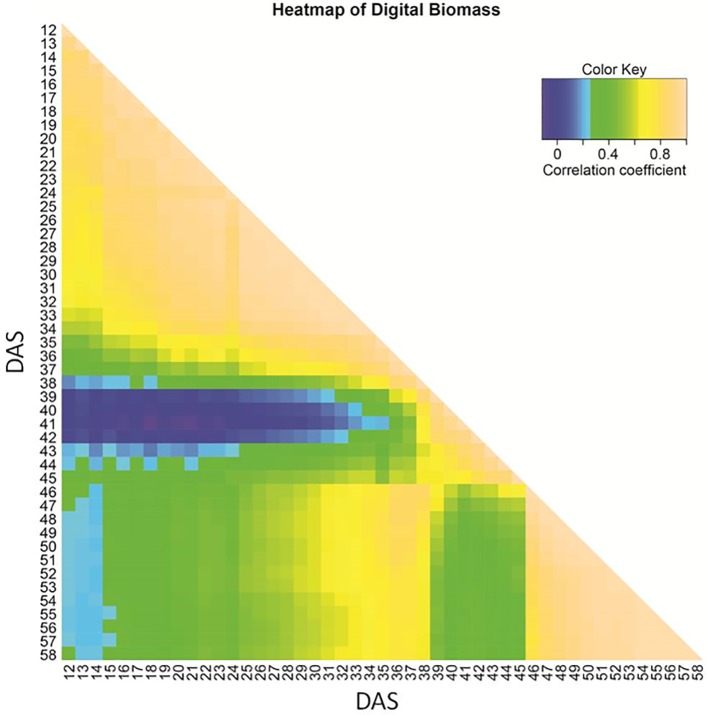Non-Invasive Phenotyping Reveals Genomic Regions Involved in Pre-AnthesisDrought Tolerance and Recovery in Spring Barley.
Dhanagond S, Liu G, Zhao Y, Chen D, Grieco M, Reif J,Kilian B, Graner A, Neumann K
Front Plant Sci. 2019 Oct 25;10:1307. doi: 10.3389/fpls.2019.01307
With ongoing climate change, drought events are becoming more frequent and willaffect biomass formation when occurring during pre-flowering stages. We exploredgrowth over time under such a drought scenario, via non-invasive imaging andrevealed the underlying key genetic factors in spring barley. By comparing withwell-watered conditions investigated in an earlier study and includinginformation on timing, QTL could be classified as constitutive, drought orrecovery-adaptive. Drought-adaptive QTL were found in the vicinity of genesinvolved in dehydration tolerance such as dehydrins (Dhn4, Dhn7, Dhn8, and Dhn9)and aquaporins (e.g. HvPIP1;5, HvPIP2;7, and HvTIP2;1). The influence ofphenology on biomass formation increased under drought. Accordingly, the mainQTL during recovery was the region of HvPPD-H1. The most important constitutiveQTL for late biomass was located in the vicinity of HvDIM, while the main locusfor seedling biomass was the HvWAXY region. The disappearance of QTL marked thegenetic architecture of tiller number. The most important constitutive QTL waslocated on 6HS in the region of 1-FEH. Stage and tolerance specific QTL mightprovide opportunities for genetic manipulation to stabilize biomass and tillernumber under drought conditions and thereby also grain yield.
